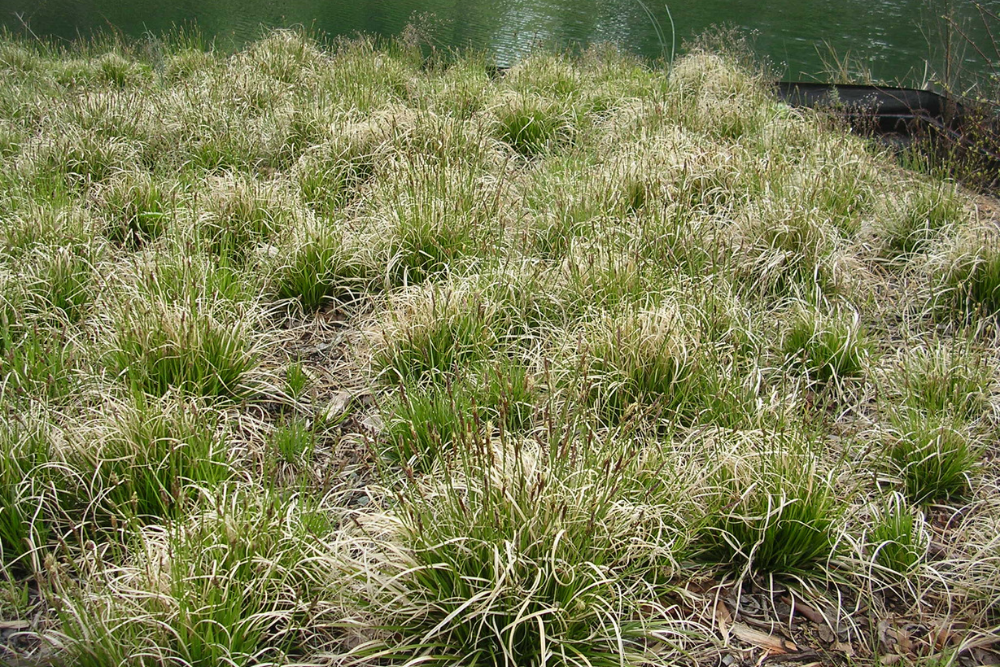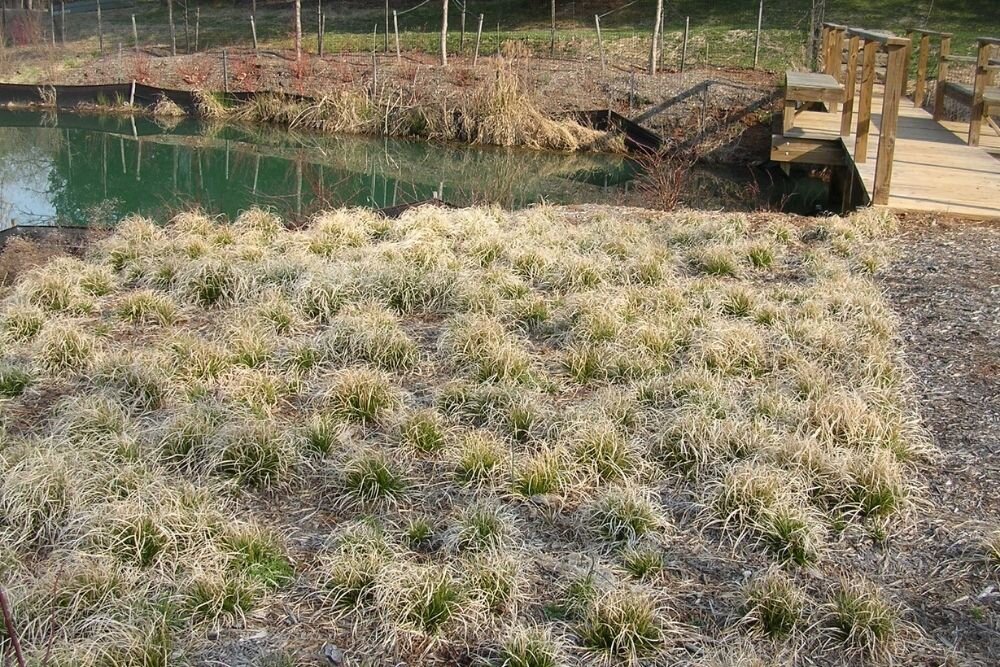Pennsylvania Sedge
Photos by Matt Whitaker
Scientific Description: Pennsylvania Sedge – Carex pensylvanica – is a highly variable native member of the Sedge (Cyperaceae) family and is widely distributed, growing in woods, woodland openings, and thickets, on upland organic soils in average to dry conditions, over much of eastern North America. This species spreads by rhizomes and can create a woodland lawn or sod. This is a very forgiving species tolerant of drought, poor soils, and deep shade. This grass-like perennial does best in part to full shade and grows to a height of 8 inches. While this is a flowering plant, its blossom is rather insignificant and has no fragrance.
Pennsylvania Sedge has no disease or insect issues. Because it is a native and is acclimated to Hardiness Zones 3 through 9, it will thrive in our Hardiness Zone (7).
This plant is difficult to grow from seeds. However, it can be easily grown as a divided plant in new places in the yard. In the spring, gardeners merely slice the sod of the plant with a sharp knife or a potting trowel, then move the plug to the new area.
Photo by Matt Whitaker
Habitat Value: It provides shelter for many species of bird and yields nest-making materials for birds and other animals.
Photos by Matt Whitaker
Landscape Value: By Matt Whitaker of WMWA Landscape Architects
Pennsylvania Sedge was one of the first plants I adopted as a favorite and advocated for in almost every project while at Nelson Byrd Woltz almost 20 years ago. Warren Byrd once asked me if I owned an interest in its production because of my overzealous advocacy. In the decades since, it has become one of the most sought-after perennial groundcovers in the horticulture trade. This is due, perhaps, because it does so effectively mimic the look of a lawn in areas where a lawn would not grow: dry shade. Its attractiveness, durability, and minimal maintenance requirements also make it very popular. A sedge and not a grass, this no mow lawn substitute should NOT be mown and will not regrow new blades until the following year if mown. It also does not tolerate significant foot traffic, so it is best in a place where you want the look of the lawn but not the function. The lush green ‘mane’ it produces is an excellent addition to any shade garden.
Also called Oak sedge because of its tolerance of the deep shade/dry under oaks. While on a field visit to Smith Mountain Lake in the mid-2000s, I observed this sedge and Christmas fern as the only two species that did not appear to be bothered by the moderate drought we were experiencing. It is semi-evergreen here with part of its blades remaining green while the rest turn an attractive amber color. By spring, the old blades have flattened out close to the ground, eliminating the need to cut it back or mulch, making this a truly low maintenance species. Pennsylvania sedge does excellent with morning sun in part shade conditions but not so much the opposite, with morning shade and hot afternoon sun. In those conditions, the tips of its blades turn an unattractive brown. It also does not tolerate wet soils for long periods.




